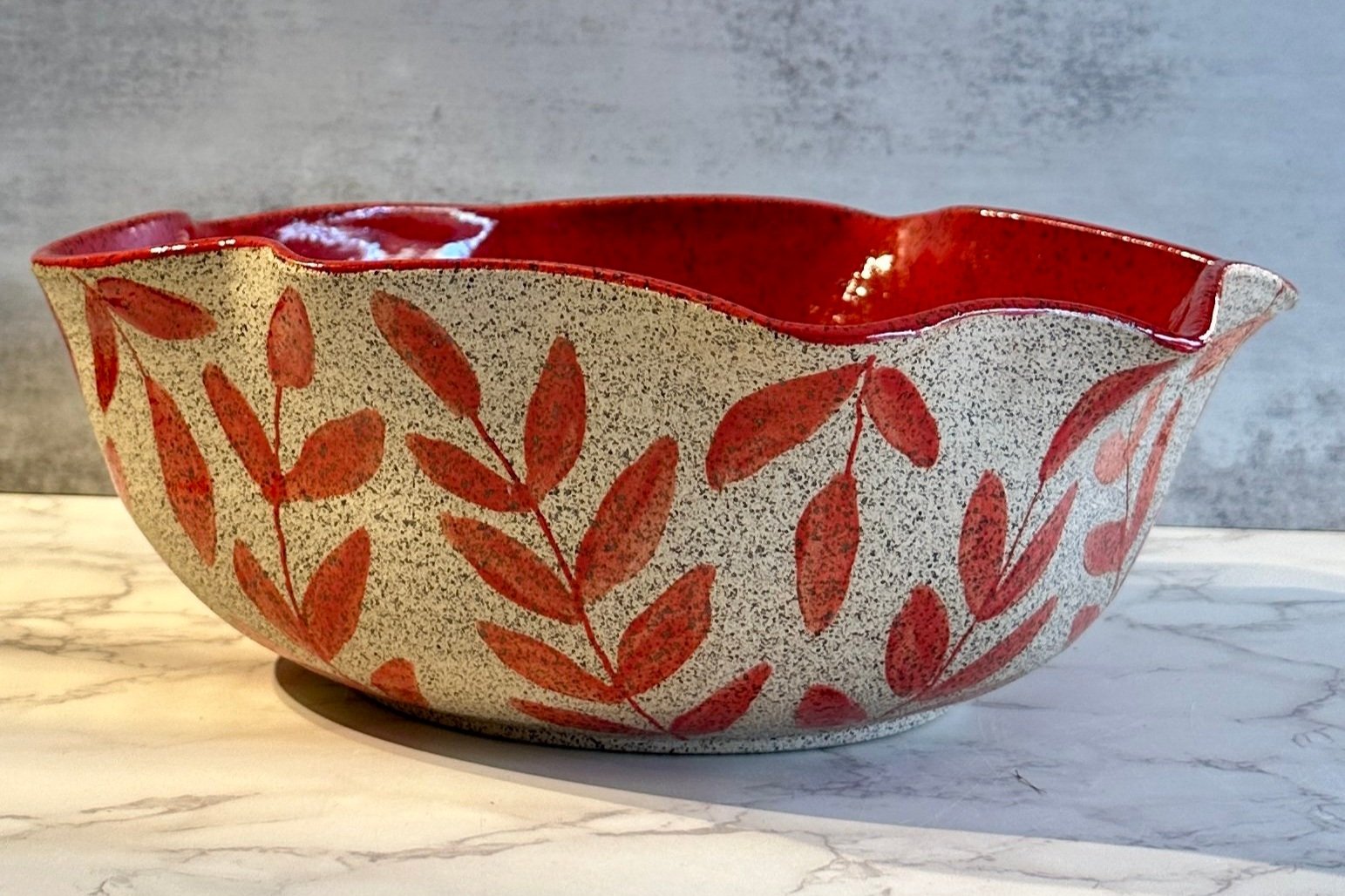Exploring Wabi-Sabi Aesthetics in Pottery
My partner first taught me the phrase wabi-sabi after I got a big scratch on my car. As I looked at the long silver line on my dark blue door, the disappointment obvious on my face, my partner exclaimed, wabi-sabi! To which I responded, huh?
When I learned what the phrase stood for, it became a mantra.
My eye-make up not symmetrical? Wabi-sabi. A scuff on my shoe? Wabi-sabi. A rip in my sweater? Sew it back together and wabi-sabi. A piece of pottery not turn out the way I imagined? Wabi-sabi.
So, What is Wabi-Sabi?
Wabi-sabi is a Japanese aesthetic philosophy with historical roots in Zen Buddhism and Japanese tea ceremonies that embraces imperfection, transience, and the beauty of natural simplicity. The key principles of the philosophy are asymmetry, roughness, simplicity, and natural processes.
A write-up for the Carnegie Library posits, “Wabi-sabi encourages us to appreciate that nothing is truly perfect or permanent. From a new crack in a favorite plate or tear in the elbow of a beloved jacket to life’s much more monumental losses, wabi-sabi gives us a way to frame these challenges and allows us to find strength and beauty in the process of healing and repair.”
How Can we Apply Wabi-Sabi to Pottery?
I have a theory.
Due to the prevalence of factory made products, more and more people expect perfect symmetry in pottery.
Perfect walls. Perfect glazing. Perfect lines. Perfect copies.
Wabi-sabi porcelain splatter-painted cups. I discuss splatter painting here.
Sometimes, I hear a pottery student disappointedly announce that their piece isn’t perfect — perhaps because it has a little wobbly bit, or a little crack, occurrences that happen outside of one’s control, like wrinkles with aging.
I, too, have been victim to this feeling of disappointment, even though wabi-sabi is a mantra of mine. If my glaze is a little uneven, I can’t bear to sell a piece full price. Perhaps because my customers expect perfection.
What does perfect even mean?
Why is it that many of us put so much weight on evenness? On symmetry? On smooth unblemished surfaces? On freshness? Newness? Youth?
Here’s the thing about humankind. We are not symmetrical. We are not perfect. How can we expect our creations to be?
We are messy and wonky and one of a kind. Shouldn’t our handmade pottery, something made of clay and earth, reflect the beauty of such an imperfect humanity?
Take these two examples from the Met Museum: This piece is a from 17th Century Japan, and this one is from 2014 and made by Mihara Ken. Both are examples of wabi-sabi pottery — are they not beautiful? Worthy of museum attention?
Or this piece I made.
The curve at the lip of the vase unexpectedly happened when I was transferring the freshly wheel-thrown piece onto a board to dry. When I placed the piece on the board, I considered altering the curves back to their original thrown form, but I loved the new shape — the movement of it.
At the carving stage (I write about my carving process here and which tools to use here), I went with florals for their own natural curvature and unique qualities. When I went to glaze, I chose the pour over glazing method, which allowed for the organic undulated layering on the piece.
The Appeal of Wabi-Sabi in Pottery
What would happen if ceramic artists embraced imperfection, transience, asymmetry, roughness, simplicity, and the beauty of natural processes?
In an article from the June/July/August 2022 issue of Ceramics Monthly, Turkish potter Didem Firat “believes that in a world obsessed with technology and perfection, we need to allow room for the simple and the imperfect.” She says, “At the beginning … I was trying to build symmetric and perfectly shaped objects … Then I shaped the clay without any concern about perfection and, for me, the outcome was magnificent.”
In an article from the May/Jun 2022 issue of Pottery Making Illustrated, Delores Farmer writes, “I don’t force this design when the clay isn’t working in my favor. … I consider the distorted pieces to be a reminder that there is beauty in imperfection. Oftentimes, the pieces that have the best equipoise [balance of forces and interests] are asymmetrical.”
The take-away: wabi-sabi aligns with mindfulness and letting go.
There is something therapeutic in embracing imperfection in creative works.
A slight wobble is a sign of something handmade as well as a sign of the artistic process being a collaboration between the artist and their environment.
Because in clay-making, there are many aspects beyond human control.
While we can manipulate our processes and environments to prevent unevenness, cracks, and glaze runs, sometimes, the clay, the kiln, and the weather just have a different plan for our art.
Wabi-sabi!
In my own practice, while my pieces may look controlled, they are actually often a practice of wabi-sabi because I let myself go in the studio.
This is is why I never make the exact same thing twice.
I let the clay and my hands and my heart guide me and I often surprise myself along the way. I may come to the wheel with the goal to make a cylinder and end up with a lidded jar. I may plan to glaze that jar in blue but end up carving stripes and glazing it orange.
With my sculptures, I embrace wabi-sabi by going for organic forms that show off the natural texture of pinching the clay.
Tips for Practicing Wabi-Sabi in the Pottery Studio
Are you ready to allow yourself some imperfection? Some asymmetry? To allow yourself to succumb to natural processes?
Here are some ways you can you bring wabi-sabi into your pottery practice:
Wabi-sabi glazed tea bowl I made as a senior in high-school in 2006. Looks like I was practicing wabi-sabi pottery even before I had a name for it.
When hand-building, allow yourself to create organic shapes and uneven forms. Leave those pinch marks. Keep the finger prints. Don’t fret about the walls of your cylinder being a little bumpy or uneven.
When wheel-throwing, permit yourself to wobble, to bulge, to bend in unexpected ways. Collar a piece in aggressively to make the walls buckle. Hug your piece. Slap it. Poke your fingers at it. Flip it upside down like I do when I make my ergonomic curvy bowls.
Explore minimalist glazing techniques that enhance the natural texture of the clay. Or just relinquish control a bit when glazing (like splatter painting, which I discuss here) and see what happens!
Accept (dare I say, celebrate?) "flaws" like cracks, unevenness, or firing marks.
Experiment with unpredictable firing methods like wood firing or raku.
Take Time to Reflect
After each time experimenting with wabi-sabi, take some time to reflect.
How did you feel when intentionally allowing yourself not to succumb to perfection and symmetry? Examine those feelings.
How do you feel about the piece afterward? Why?
If the pull of perfection is still strong, spend some time finding the unique beauty in your creation.
And remember this: isn’t it wonderful that you made the only piece of its kind in the entire universe?






